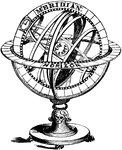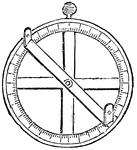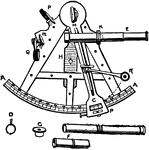Clipart tagged: ‘celestial’

Annual Parallax
"Suppose a to be a stationary celestial object, then as the Earth makes her annual revolution around…

Armillary Sphere
"An arrangement of rings, all circles of a single sphere, intended to show the relative positions of…

Astrolabe
"Originally used for any instrument used for observing stars; afterwards used for an instrument for…

Sextant
"The sextant, an instrument of reflection used by navigators for measuring the altitudes of heavenly…

Armillary sphere
"A number of rings arranged round a centre, so as to represent a sphere; used to illustrate the relative…